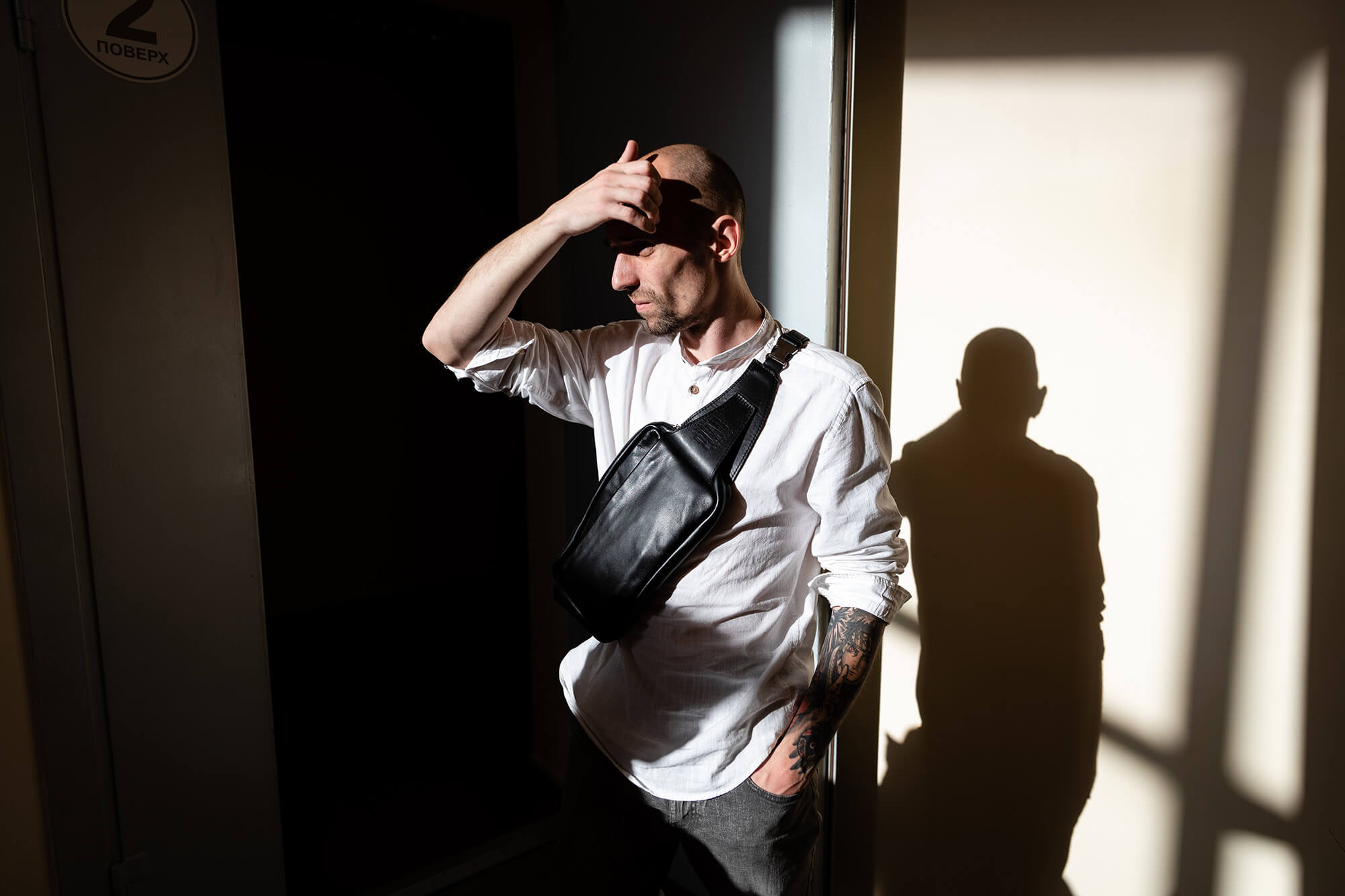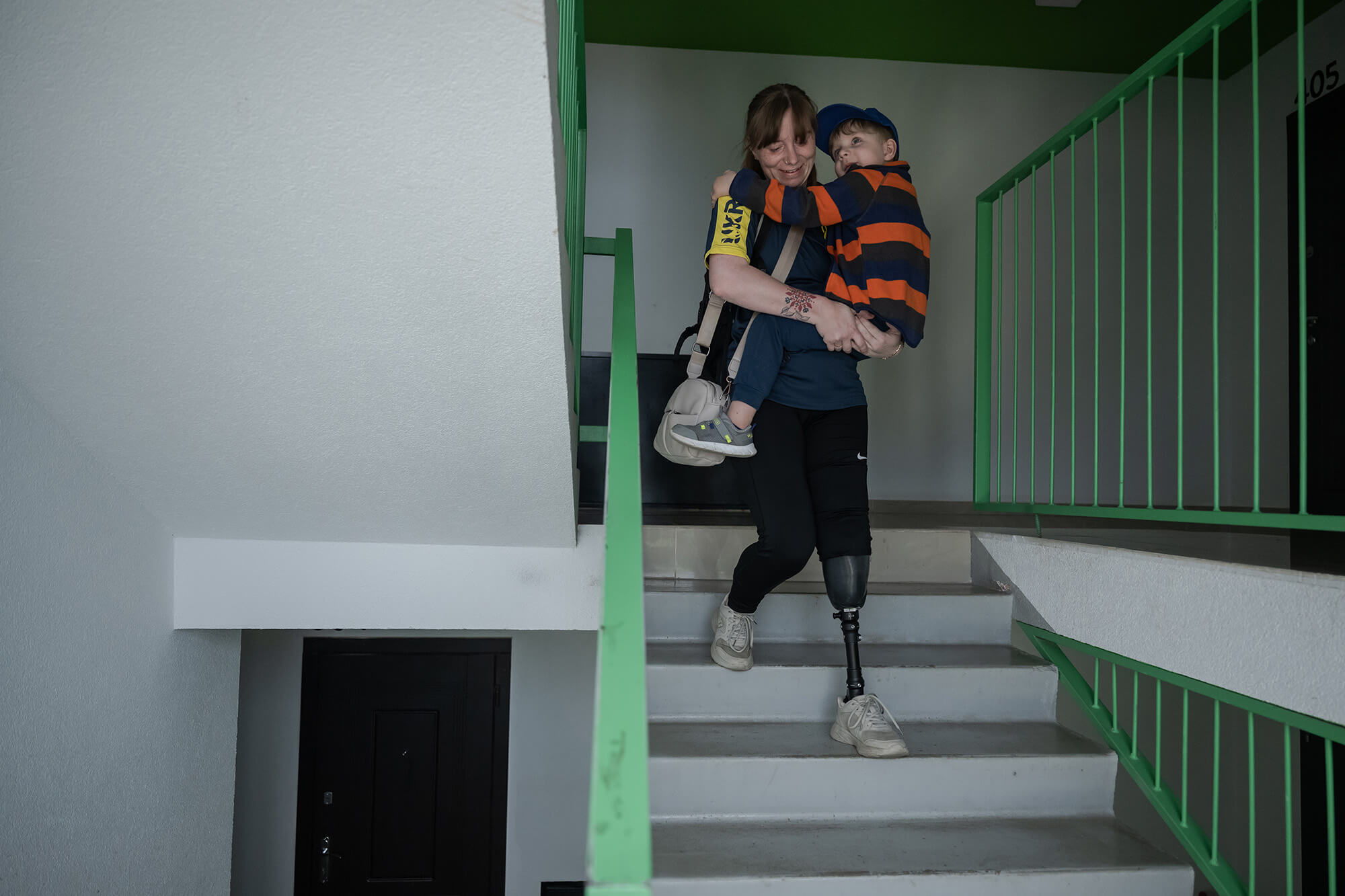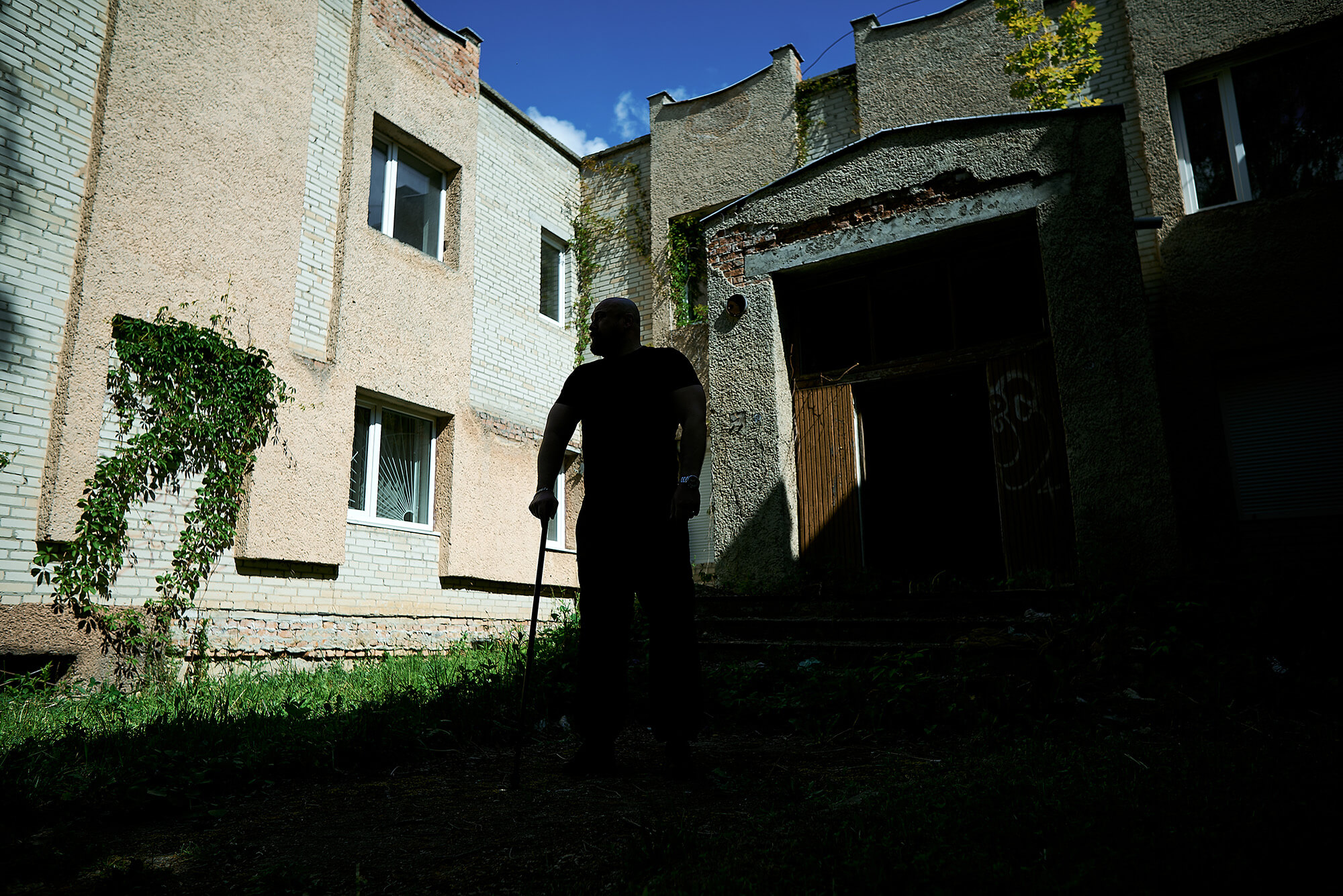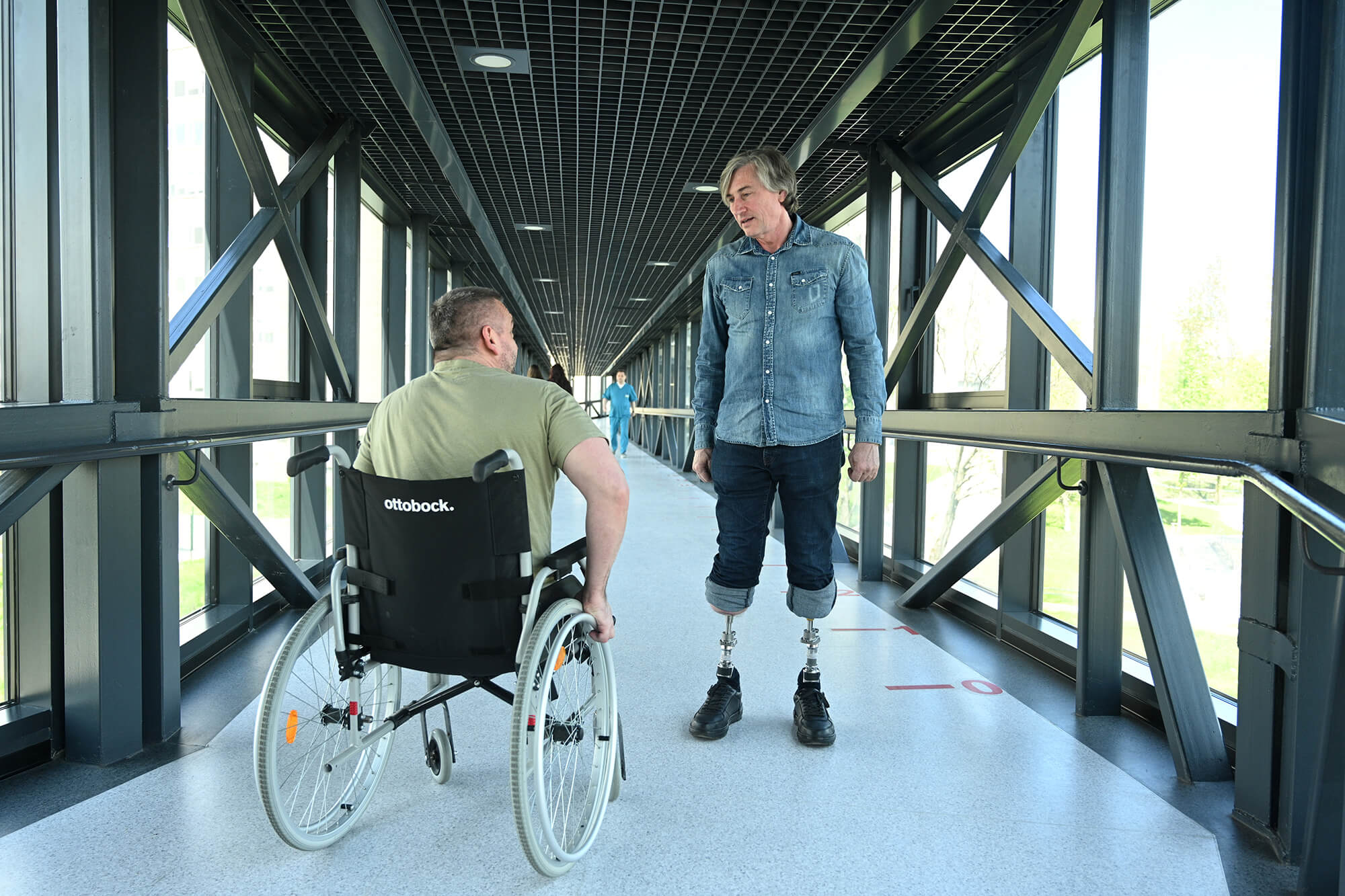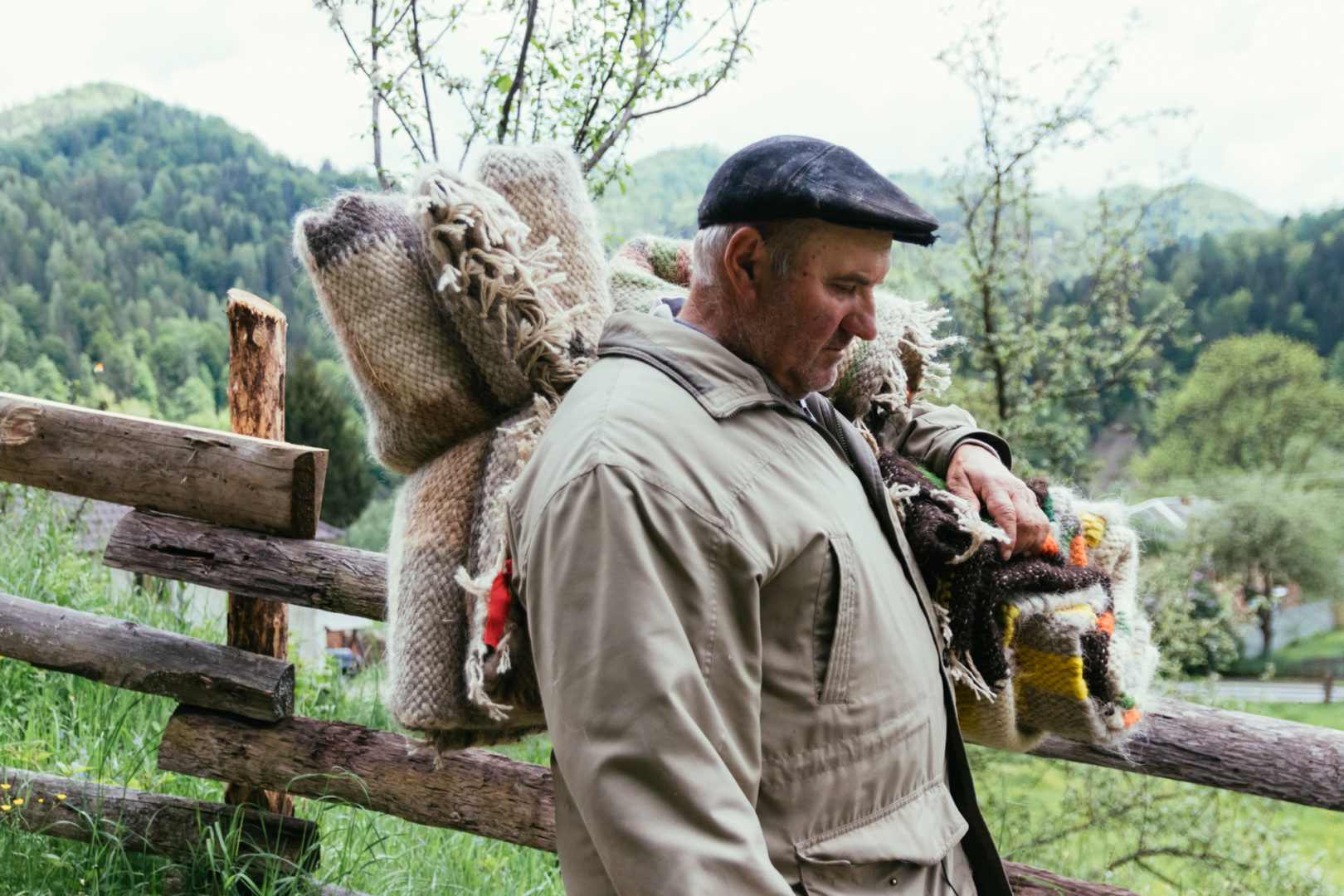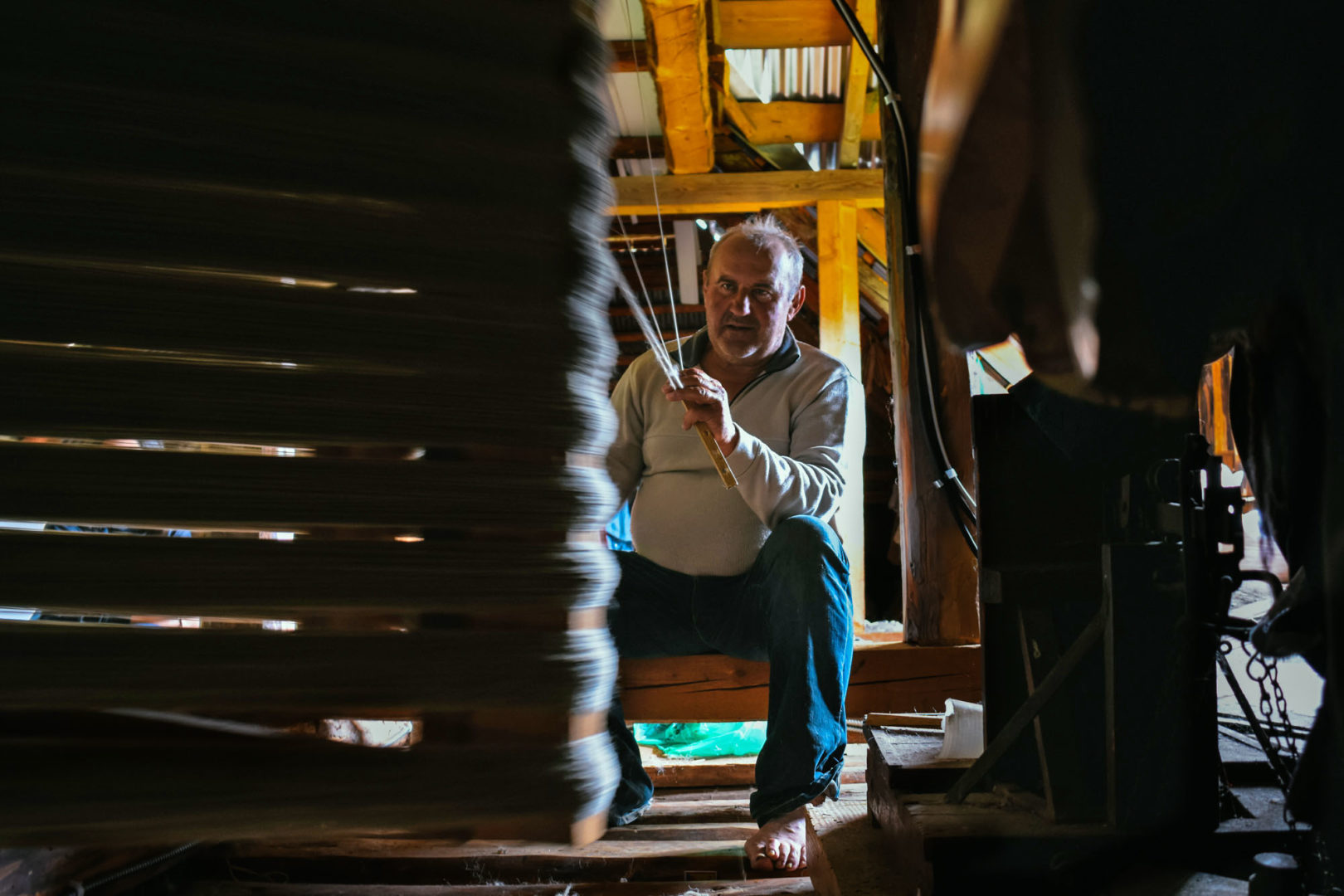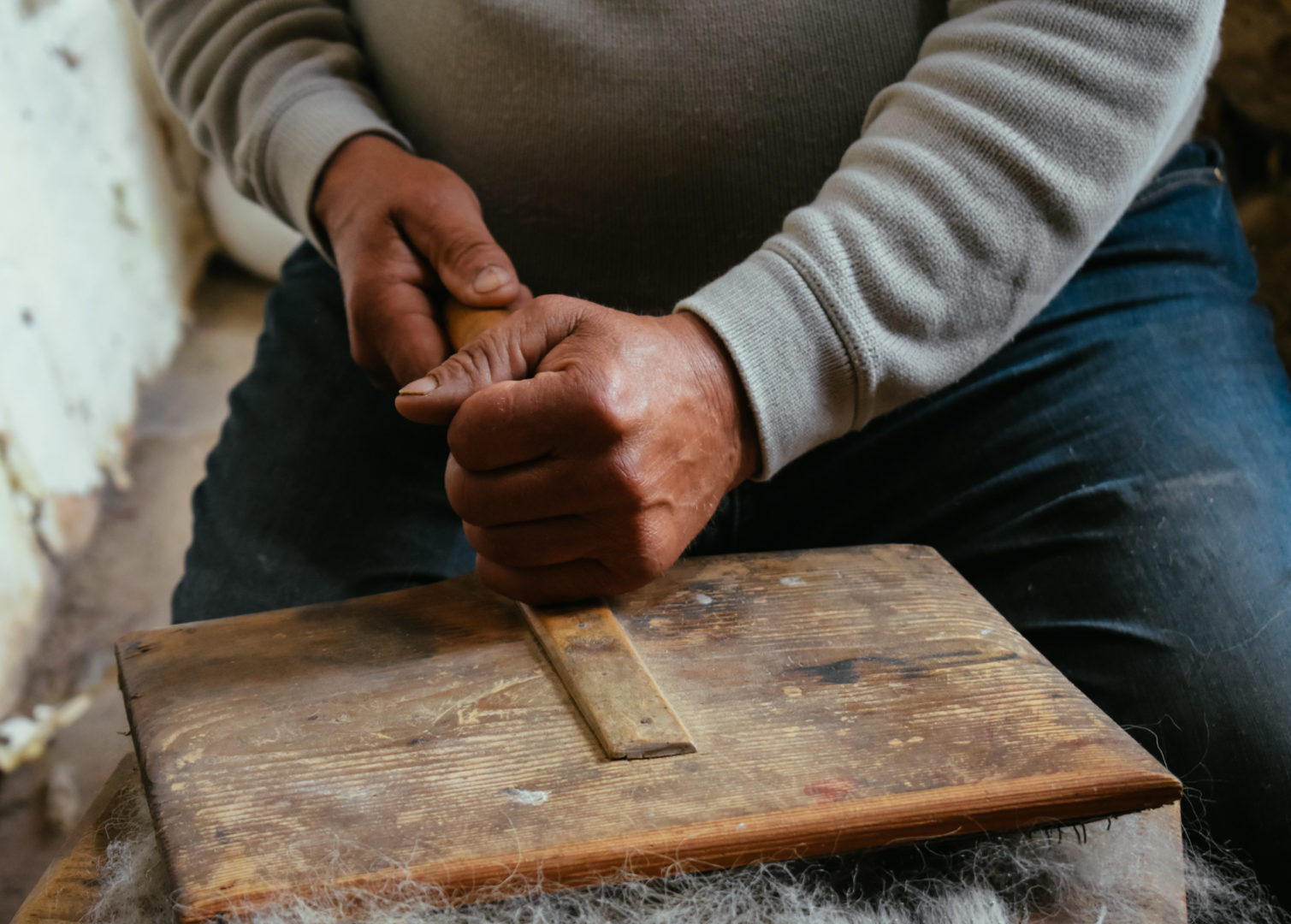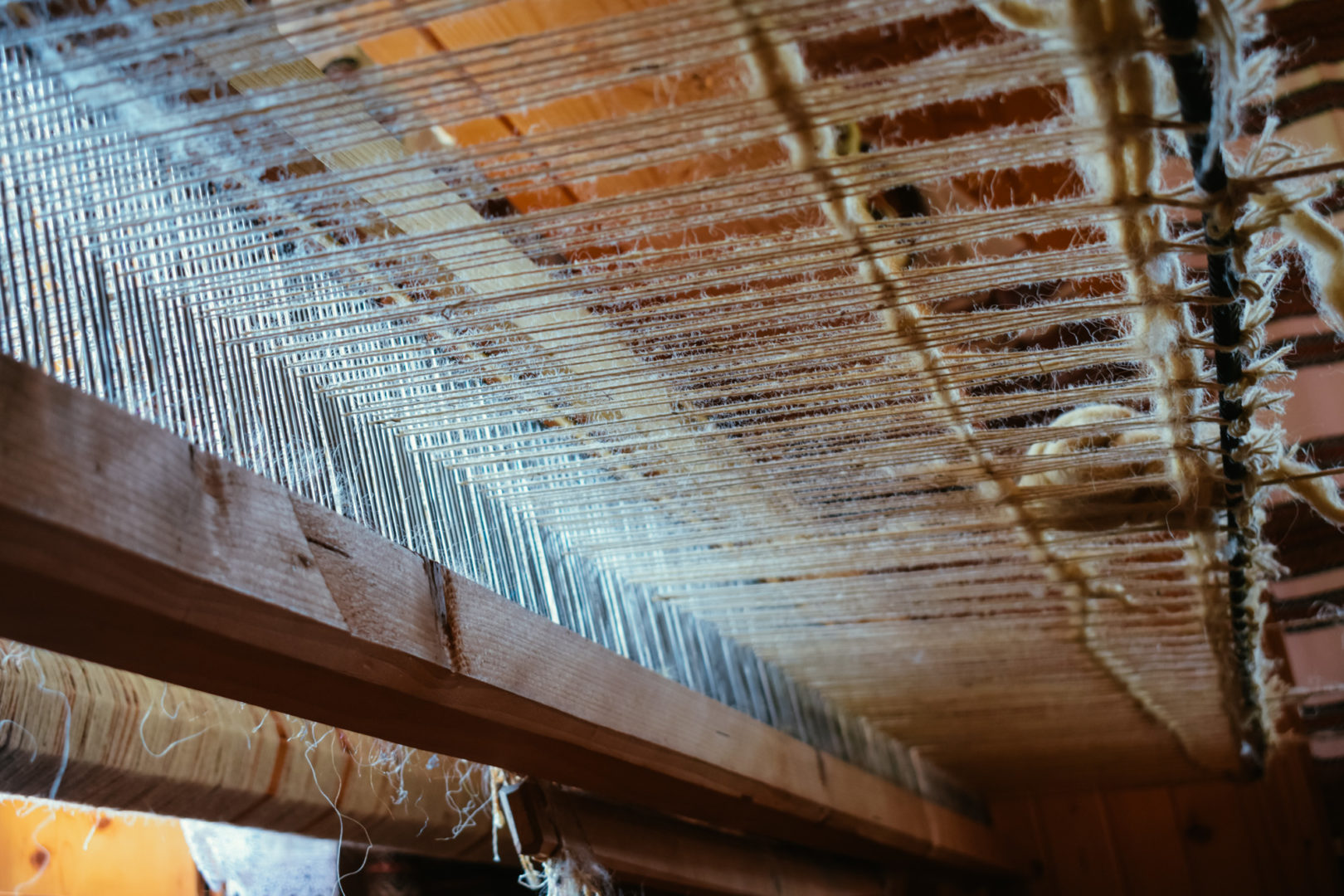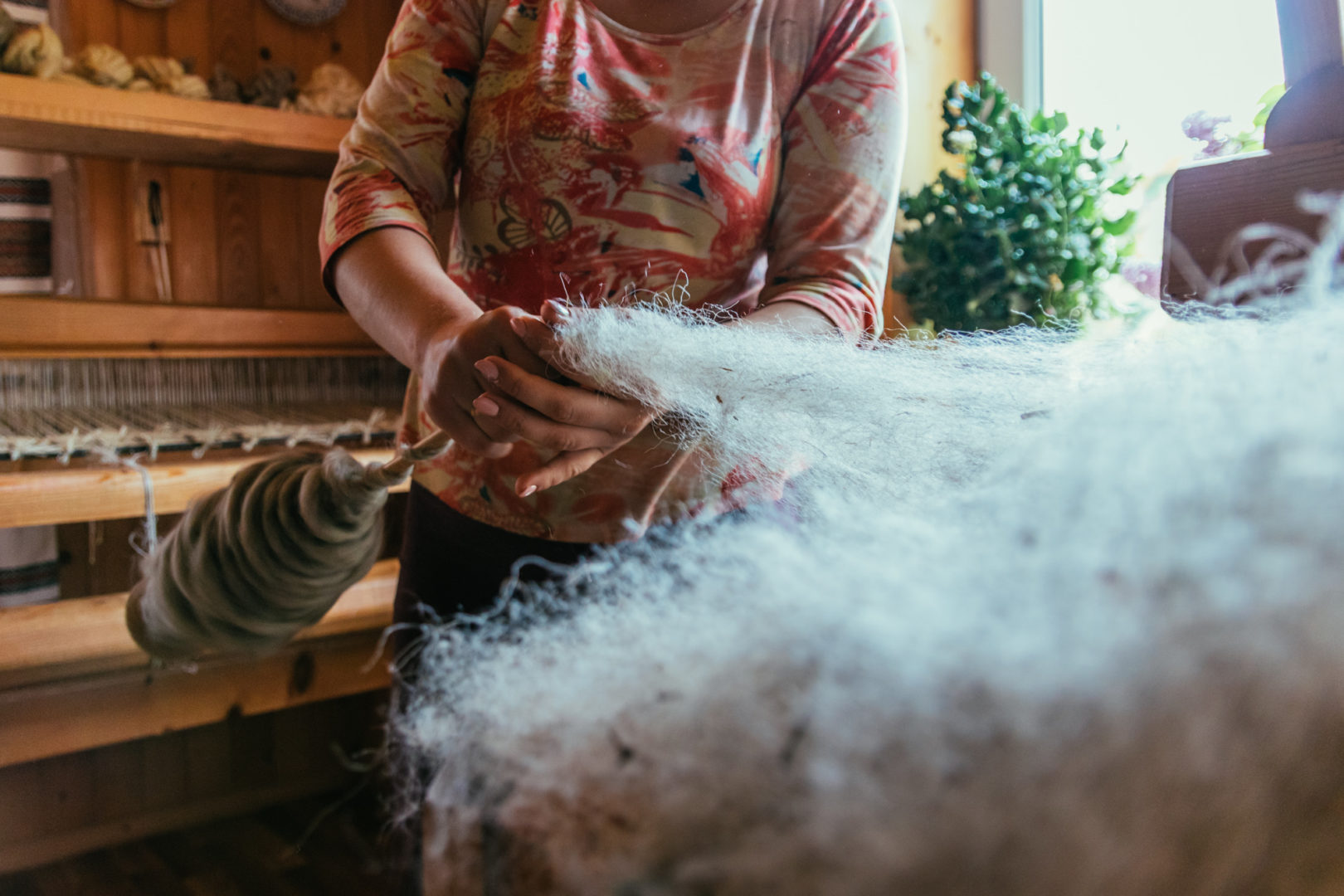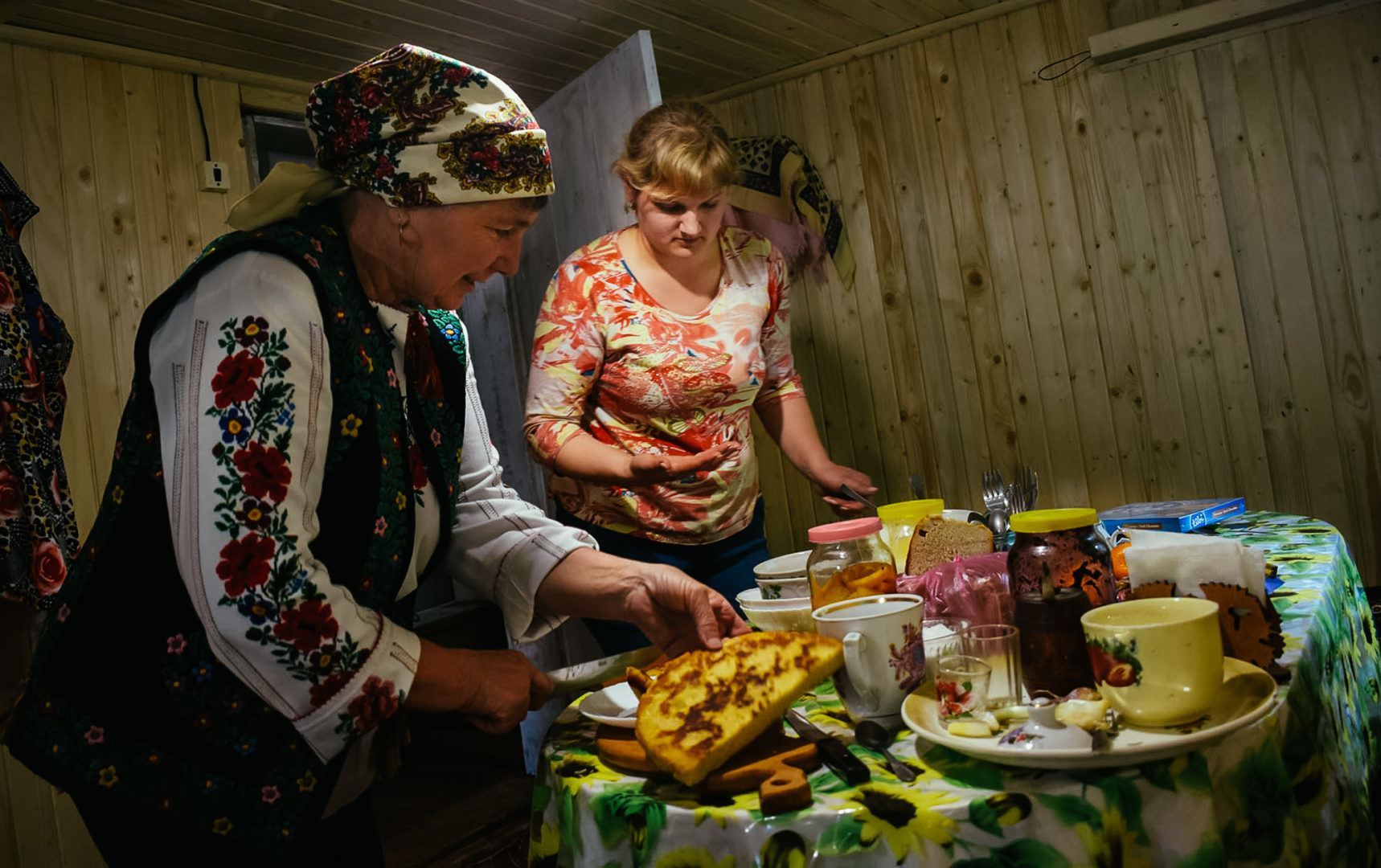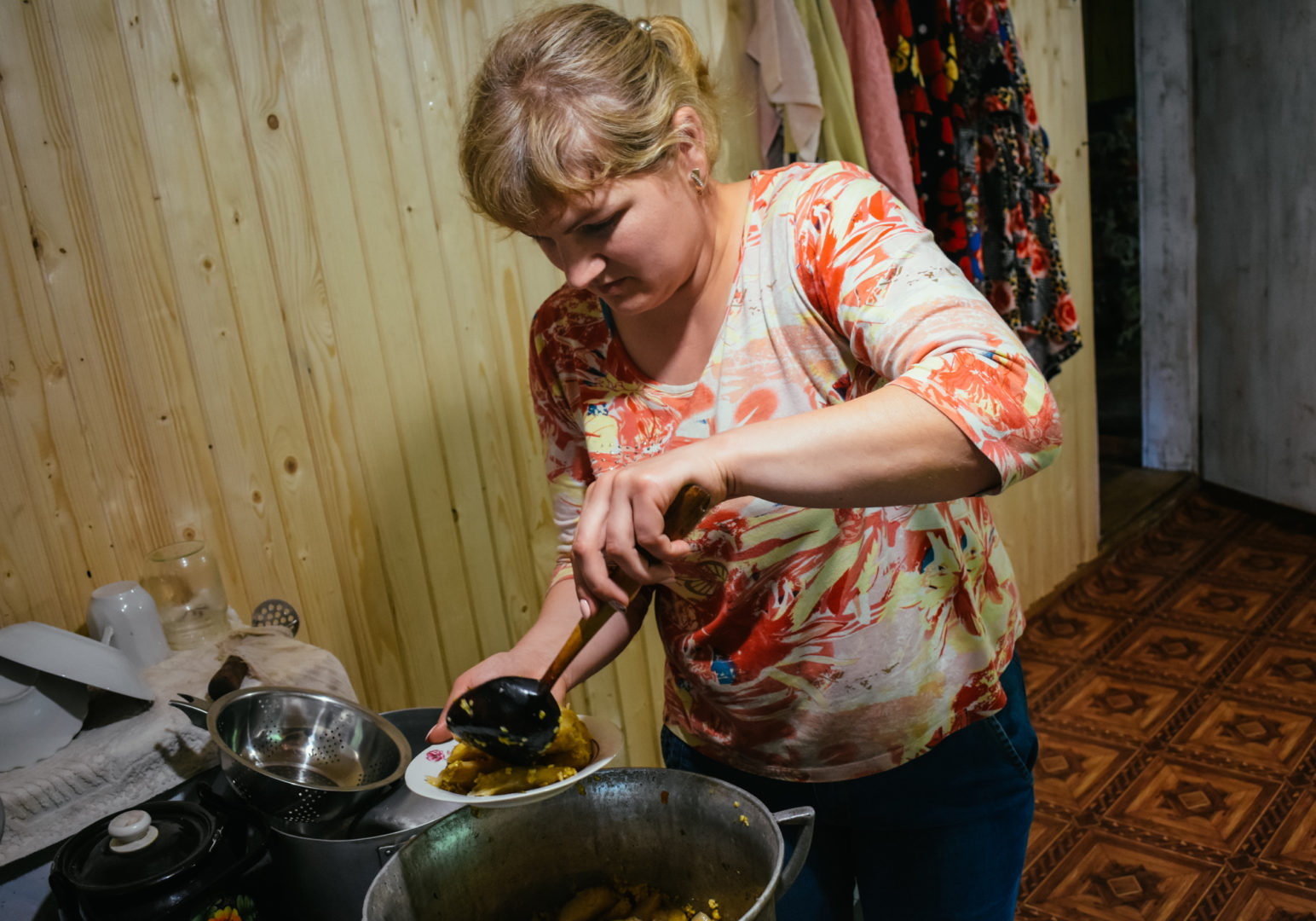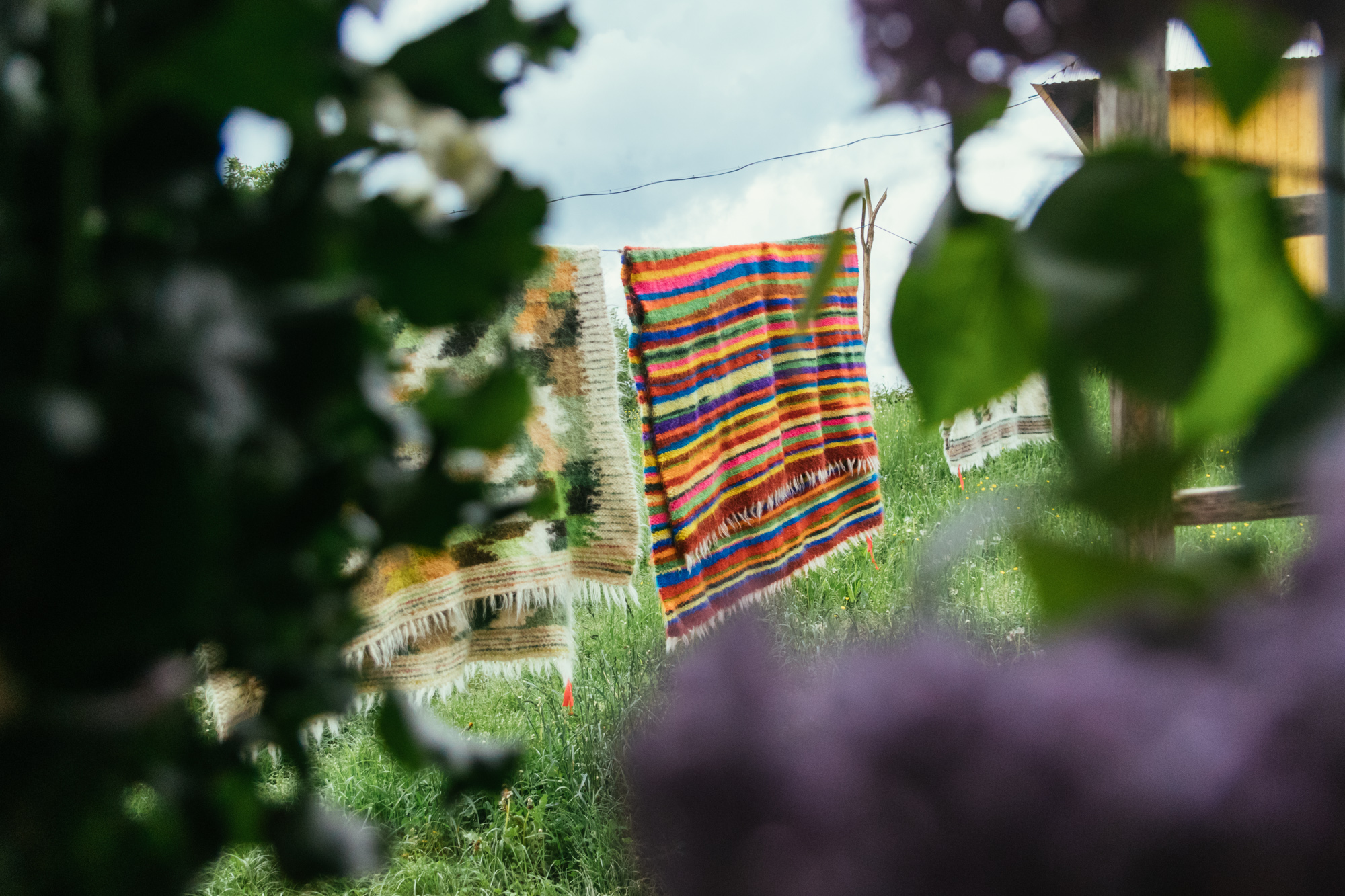
Weaving to keep a tradition alive
In a dark basement in an isolated mountain village in southwestern Ukraine, Mykola silently tosses large wool blankets into a stream. The sound of the water rushing is so powerful that it is impossible to hear anything else.
Although this may have been a shocking experience for an outsider, this is just one of the steps used in the preparation of lizhnyks. The making of lizhnyks is a common handcraft in Yavoriv, a village southwest of Ukraine. This traditional process uses wool to make blankets that double as rugs, wall decorations and gifts — its origin deriving from the Ukrainian verb “to lie.”
The long history of the woolen symbol
Before World War I, lizhnyks played a significant role for a Western Ukrainian ethnic group called the Hutsuls. At that time, the locals used the lizhnyk as bed linen. Since a lizhnyk is made from sheep’s wool, it is very warm in winter, but also comfortable to sleep under during the summer because it preserves cool air. Today, lizhnyks remain one of the most defining cultural characteristics of this region of Ukraine and the skill has been kept alive for centuries by families like the Kopylchuck’s.
Mykola Kopylchuck has lived in Yavoriv for over 60 years. This village is located in the Carpathian Mountains of southwest Ukraine and is widely known as being the heart of lizhnyk production. There are still 50 to 60 women left in this region who make lizhnyk as their primary source of income.
The survival of lizhnyk: a family tradition
Mykola met his wife, Hanna, in the village after she completed high school. They have been married for over 40 years and have two daughters together. When Mykola met Hanna, he was six years older than her. Mykola joked saying he thought she would be obedient since she was so much younger than him, but quickly found out this wasn’t the case. Hanna said Mykola adapted to her strong, sarcastic personality and they’ve been in a happy relationship and partnership ever since.
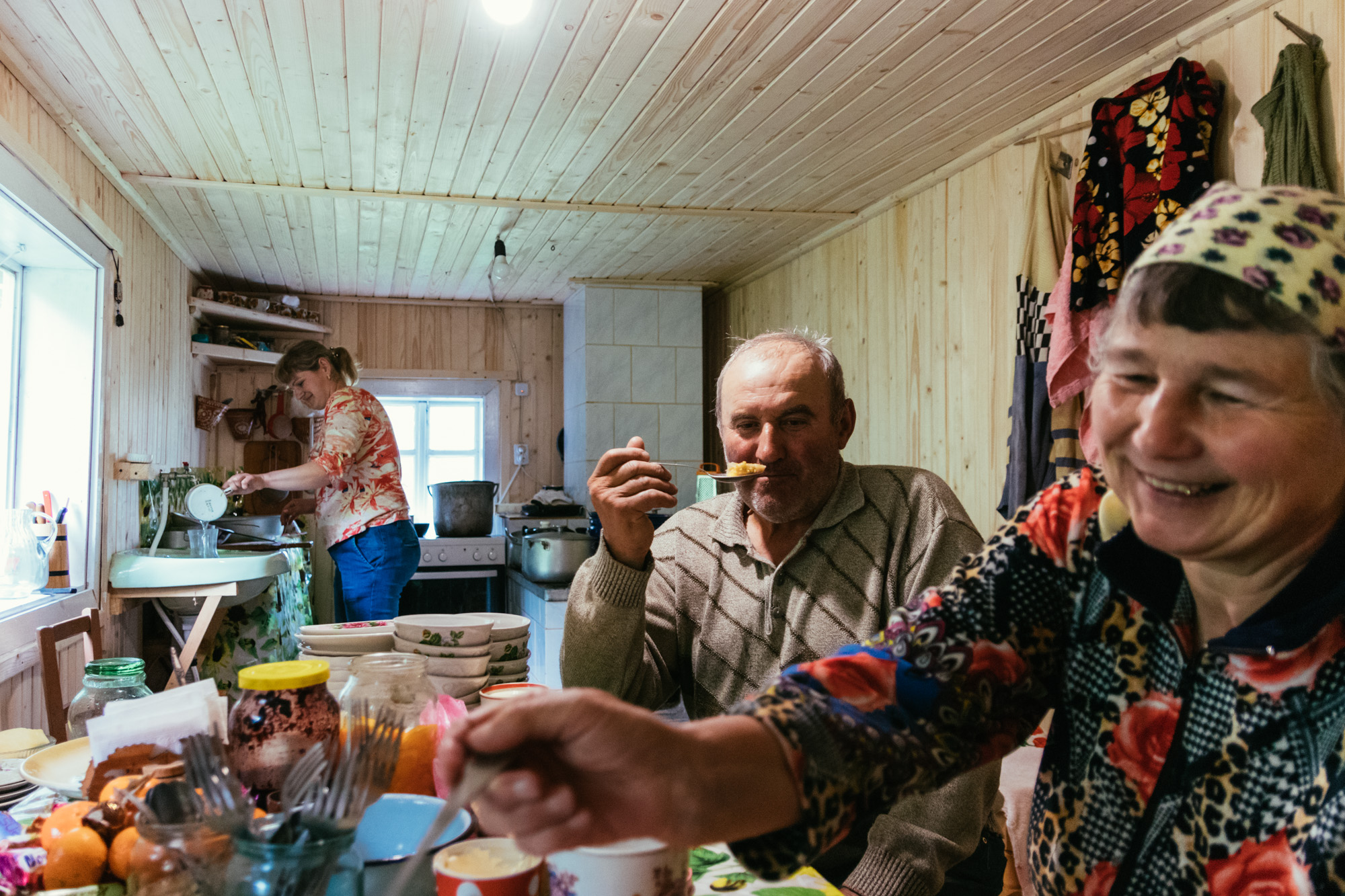
Mykola helps Hanna with the more strenuous physical labor of lizhnyk. He carries the heavy wool carpets down the mountain and puts it in a water tumble for hours in order to thicken the surface. When he is finished, he hauls them back up to the house without any complaints.
It is not my work. I am a pensioner. I just help them and do the tasks that they give me
Hanna has been creating lizhnyks for over 40 years. Her parents didn’t give her the option of furthering her education at a university so as soon as she finished school, she began working with the craft full time. Hanna and her siblings grew up without the modern distractions of TV and the internet, and learned how to spin thread and create lizhnyks from a very young age. “We didn’t need to be taught. We were born into this atmosphere”, Hanna says.
It takes a special type of person to dedicate their lives to the art of lizhnyk. The repetitive, laborious process can only be done by those who truly love the craft for all it’s worth.
When Sunday comes, there are big festivals in the village, or I have a lot of yard work, I can only think of when I can return to the workroom and proceed with my work
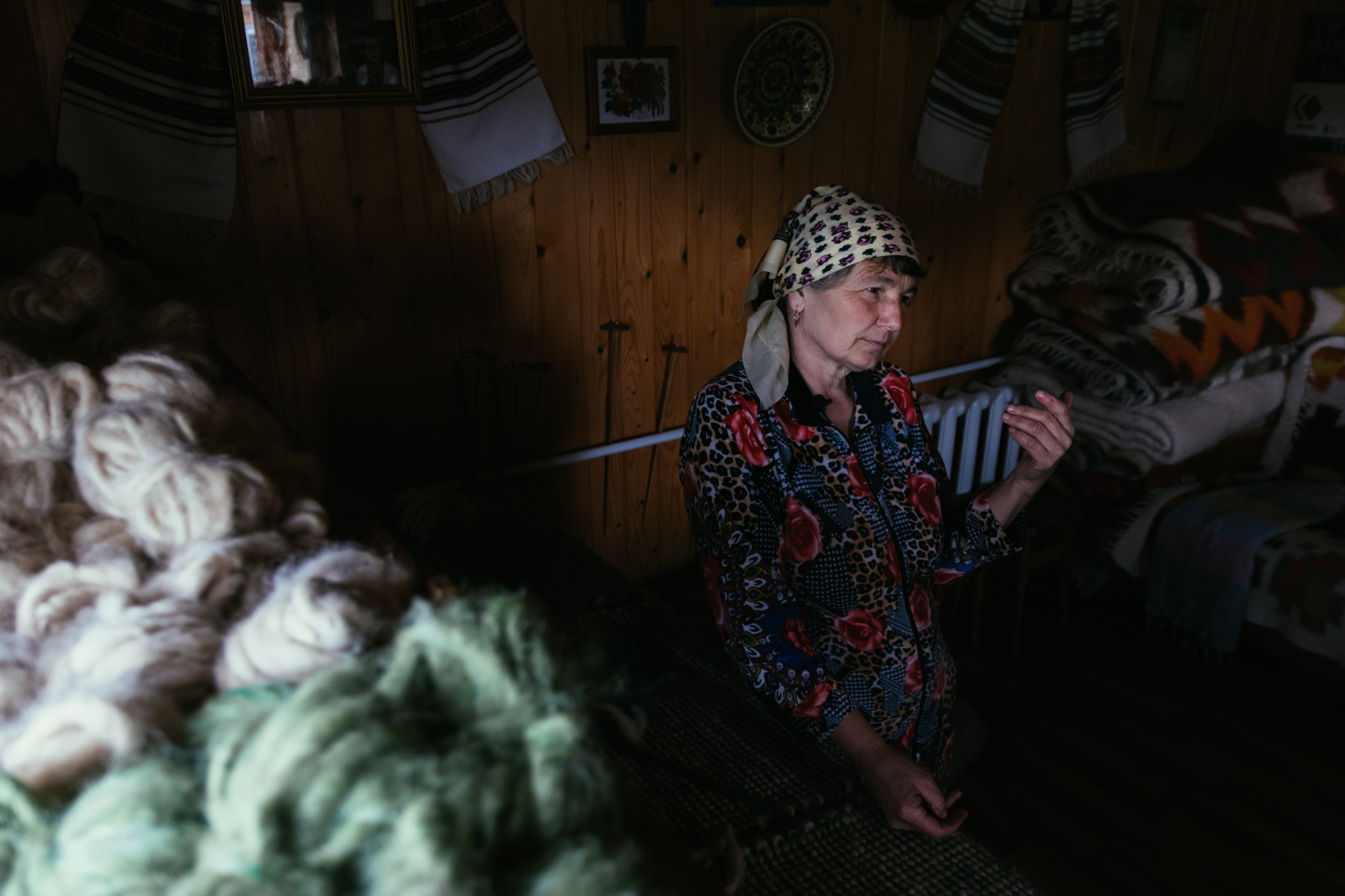
Even when she is at church, she is imagining new designs and ornaments in clothing or in the walls. Her work is constantly present throughout all aspects of her life. Hanna says creating lizhnyks is like a drug to her. She can never get enough even after all this time.
Hanna’s daughter, who is also named Hanna, works as a librarian in a neighboring village. She has known how to make lizhnyks since her early childhood. Although she has a job, she helps her mother with the craft during her two days off.
In her teenage years, Hanna and her sister earned their first money by making liznhyks during summer. Now it has become her hobby, which brings her joy as well as additional money on the side.
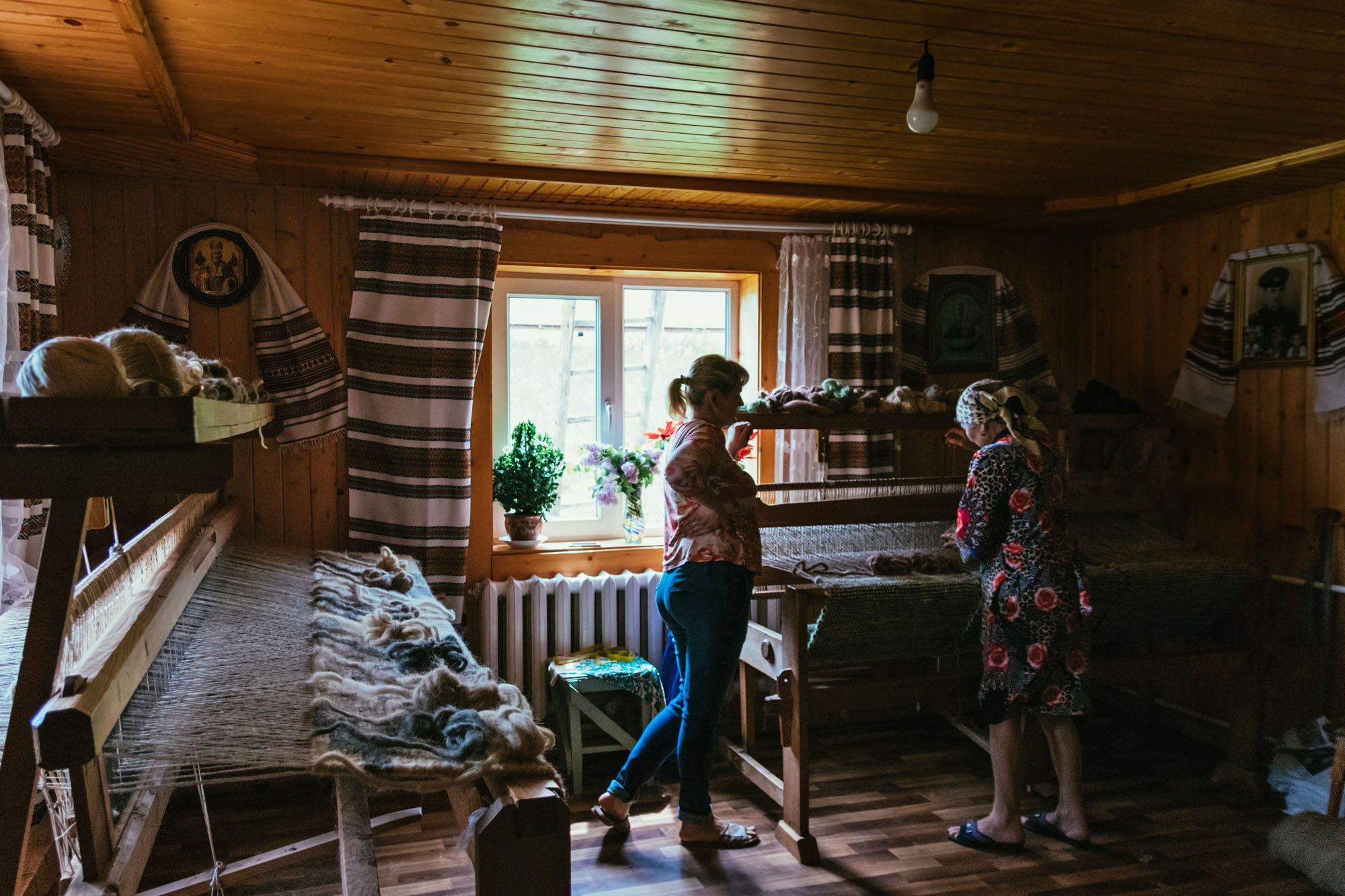
Hanna and her daughter spend a lot of their time in the craftroom spinning the thread and weaving it into decorative ornament designs. The weaving part of the process takes hours of concentration. They have to calculate the space between threads in order to construct different designs. It is Hanna’s favorite part of the process because she can design new patterns and create whatever comes to her mind. She even gives names to her creations.
“This is September”, she says while whipping a rug with her daughter outside. When we ask her why she named it for that month, she smiles and adds, “These are the colors of autumn and September. Don’t you recognize them in nature?”
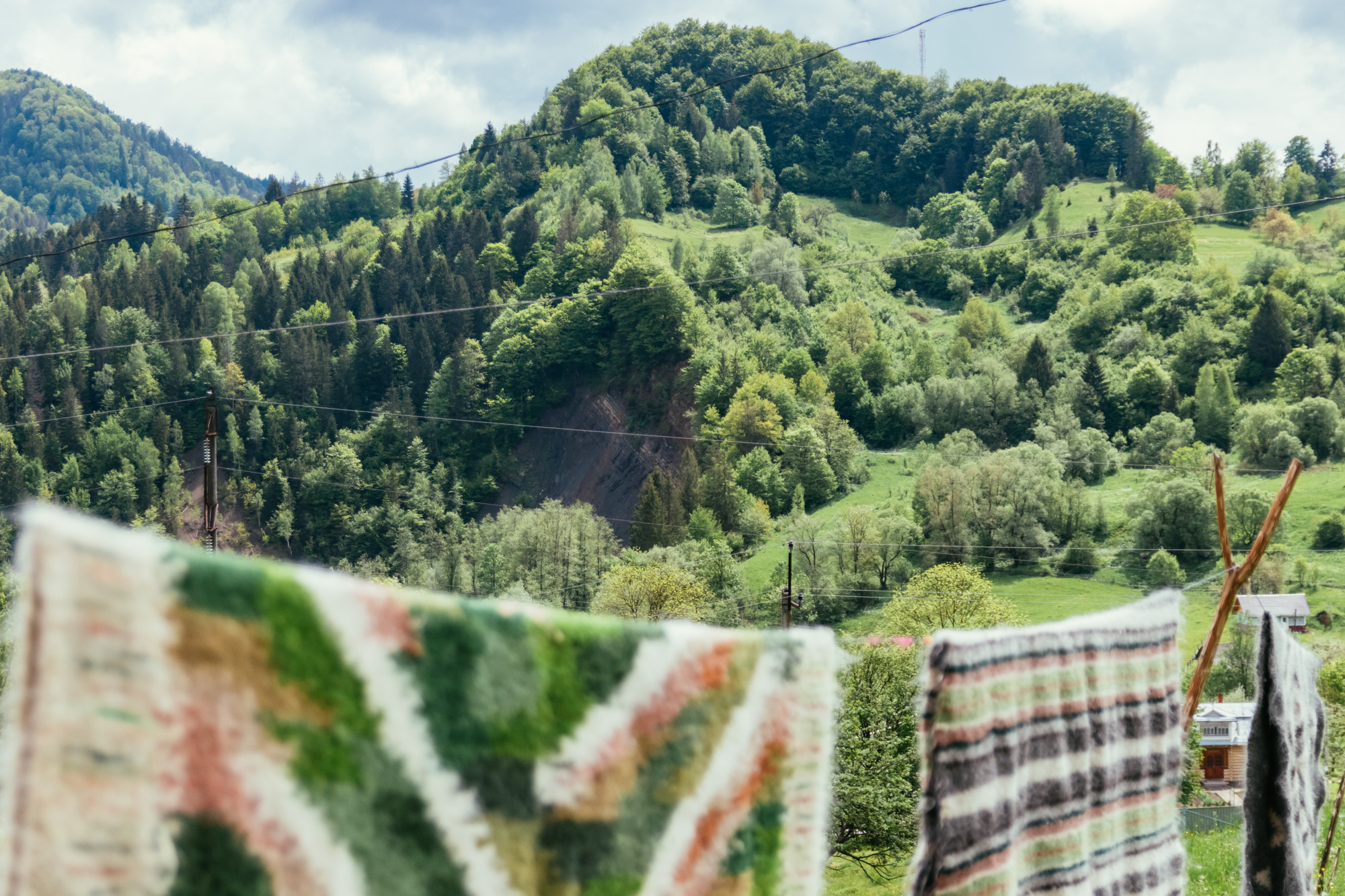
Instead of passing the time by listening to the radio or TV, Hanna and her daughter sometimes just listen to Mykola talk about the latest in Ukrainian politics. Mykola grew up experiencing the complexity of Ukraine’s history. Yavoriv was part of the Soviet territory when he was a child. As an adult in the 1990s, he saw the fall of the Soviet Union and the independence of Ukraine. Currently, his country is fighting Russia occupation in the East. Even with all of this chaos happening in their country, the Kopylchuk’s continue the tradition making of lizhnyks.
Hanna doesn’t think the youth are not actively engaged with the craft of lizhnyk making. It is difficult labor that cannot be continued into old age. Hanna believes the youth are too obsessed with earning quick and easy money with minimal effort. She rolls her eyes at the impatience and short attention span of some of the young people in the village today. Lizhnyk is a long and strenuous process that is based in tradition. It only brings enough money to survive.
A lizhnyk can take up to one week to make if the wool needs to be prepared especially for that piece. It is common for some locals to make lizhnyks for one or two months of the year and then travel abroad to find a quick buck somewhere else. The job market is much more diverse outside of the mountains which is intriguing to young people. “Most of the children here cannot wait to graduate so they can work abroad,” Hanna explained.
Although there’s been a clear change in attitude towards the making of lizhnyks, Hanna firmly believes that the artform will never die. Since it has always been here in Yavoriv, it will find a way to survive.
Explaining a life’s work in half an hour
In the summer, the Kopylchuk house is booked with tourists nearly every day. It is a way to supplement their income and allow them to continue living in this remote location.
On this afternoon, a group of students from Kyiv spend half an hour of their day learning about the ancient craft. The Kopylchuck’s open up their home for the strangers with a welcoming smile. Hanna and her daughter work tirelessly all afternoon preparing traditional Ukrainian food for more than 20 guests.
As the tourists wait for their dinner, they discuss the latest news in soccer and whether or not the house has WiFi. It does not. The Kopylchuck’s scurry back and forth between the kitchen and dining room with plates high with stuffed cabbage, bread made from potato, corn flour and homemade cheese.
After dinner, the tourists proceed to the work room for a quick lizhnyk tutorial from Hanna before heading to their next destination. The students experience her whole life’s work in less than an hour. She attempts to explain as much as she can to the fast moving tourists before they continue to their next stop.
Hanna understands that it is impossible for tourists to experience the entirety of lizhnyk. However, she is satisfied that people are still making an effort to learn about the cultural beauty of her craft even if it is such a small amount of their lives.
Elzara Halimova
Irynka Hromotska
Sydney Cournoyer
Have read to the end! What's next?
Next is a small request.
Building media in Ukraine is not an easy task. It requires special experience, knowledge and special resources. Literary reportage is also one of the most expensive genres of journalism. That's why we need your support.
We have no investors or "friendly politicians" - we’ve always been independent. The only dependence we would like to have is dependence on educated and caring readers. We invite you to support us on Patreon, so we could create more valuable things with your help.
Reports130
More